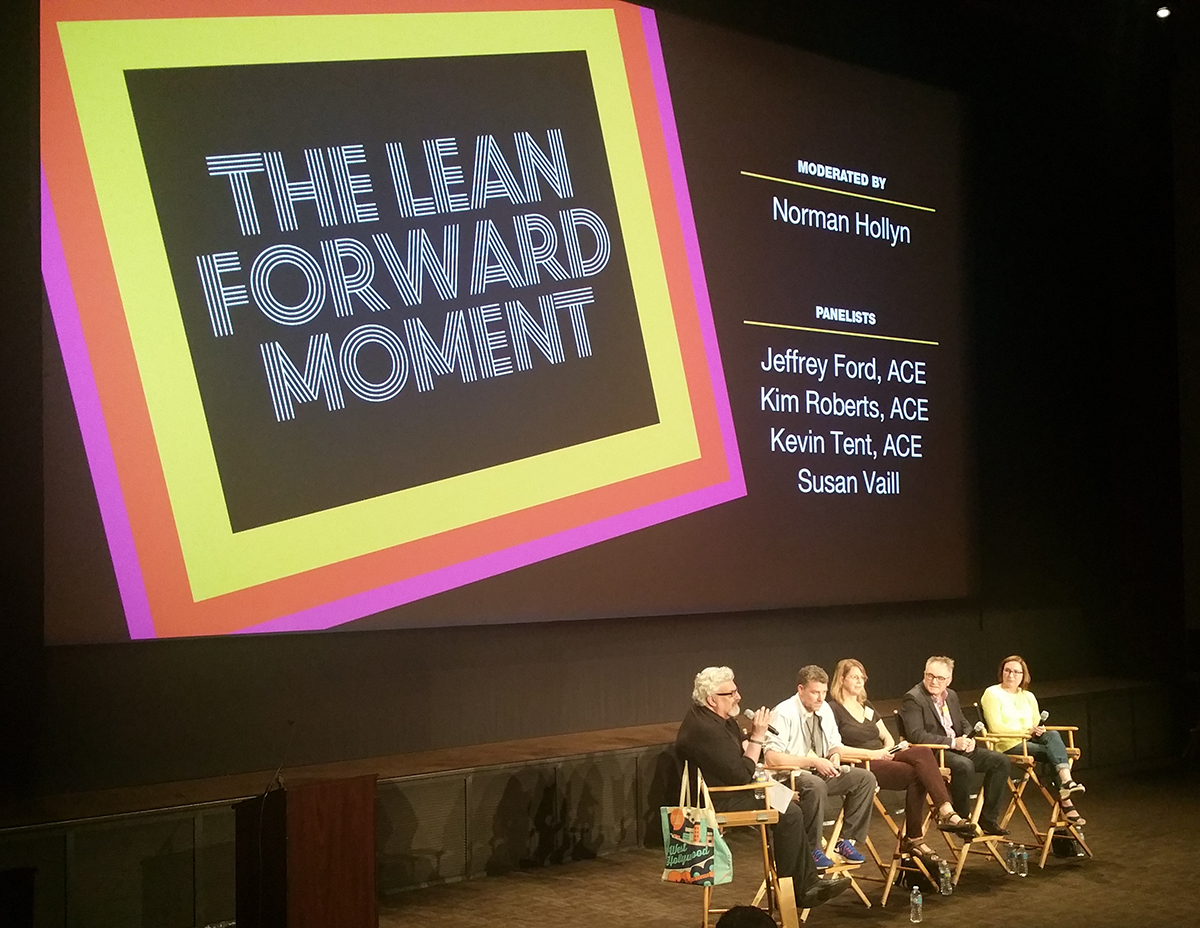Norman Hollyn, editor of the cult classic film Heathers and a Professor at the University of Southern California’s School of Cinematic Arts, teaches his students about the “lean forward moment”. The basic idea behind it stems from how an editor can manipulates an audiences’ reaction to changes they see on screen in order to pull them into a narrative. It can be an essential technique that enables the audience to emotionally connect with the story.
Talking through these moments with a few of the top editors in the industry was the focus of the The Lean Forward Moment session at EditFest 2016. This panel was moderated by Hollyn and featured Jeffrey Ford, ACE, Kim Roberts, ACE, Kevin Tent, ACE, and Susan Vaill. It was the fourth and final of the panel discussions at EditFest, and we’ve already taken a quick look at what kind of information was shared and discussed in each…
- Cutting it in Hollywood
- Cult Film Favorites
- Inside the Cutting Room with Bobbie O’Steen
- The Lean Forward Moment
…and video for this whole session is available at the bottom of the article.
During this session, Hollyn talked about how he wanted to explore scenes these editors did not edit but were instead ones that inspired them in one way or another. All of the editors on the panel are focused on different formats and genres, but those specifics don’t matter when the focus is around what sort of raw emotional impact an editor can enable and create for an audience.
Ford showed a clip from The Right Stuff and he mentioned that when he first saw this movie as a kid it blew his mind. Many directors and producers want to focus on the speed of an edit, but the clip he showed really makes the audience wait, and it was proof of how that waiting can have such a big impact. This kind of pace can let things evolve for the characters, the story and the audience.
Roberts pulled a clip from Crumb, and it showed a moment which highlighted how much an audience can get when the characters are not speaking. Giving the audience time to see the details inherent in a scene allows them to discover things on their own.
Tent featured a clip from All that Jazz and it compelled a discussion about whether the editors use sound when they’re cutting. Tent mentioned that he does use sound, as it helps him get used to the cuts and get a better sense of what he needs to accomplish in his edit.
Through it all, what was evident was that editors can and do make conscious decisions which are designed to elicit a very specific response from an audience. How successful those efforts are might depend on the project and footage, but the attempts to do so can directly influence making a moment or scene resonate with an audience to create the lean forward moment.
Watch video of the entire The Lean Forward Moment session below.

